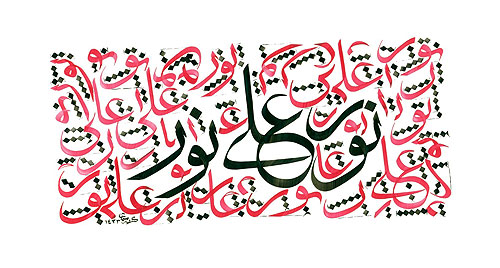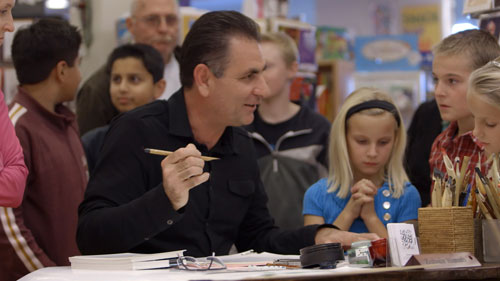When Zubair Simab fled Afghanistan at 17 during the Russian invasion of 1979, the young Afghan fighter who shepherded him across the mountains to safety gave him a pen as a parting gift. It was a simple plastic pen purchased from a village store. But the pen and all it symbolized has remained a touchstone for Simab through the years.
The pen is a revered object among Muslims, who associate it with learning and the Qur’an — and with Islamic calligraphy, the art of turning Arabic texts into decorative designs. Simab says that when he was growing up in Kabul, calligraphy was everywhere — in places of worship, in museums, in his home — and intermingled with every aspect of life. He began studying calligraphy as a boy and still works to perfect his art. “Calligraphy is not one of those things that you can do today and then put down and come back to it in two or three months,” the artist says. “It takes continual practice, continual dedication.”
Calligraphy’s central role in the Islamic world came about in part as a result of prohibitions against idolatry and, to some extent, against depictions of all living beings. “Traditionally, in the beginning in Islam,” Simab says, “if you created a portrait … of an animal, for instance, some people said that you gave that form life. And you are not The Creator, right? So the entire focus became how to beautify those Arabic words from the Qur’an. And calligraphy became the highest form of Islamic art.”
Many of Simab’s techniques, including the use of hand-carved bamboo pens, have been handed down by master calligraphers dating back to the seventh century. He bases his designs on verses of Farsi poetry, lines from the Qur’an and on traditional Arabic proverbs. The beauty of the letterforms can often spark curiosity about their meaning: “When people see my calligraphy,” he says, “they ask me, ‘What is it you’re saying?'” This can be the beginning of what Simab calls “the grass-roots work” of building understanding among cultures.




